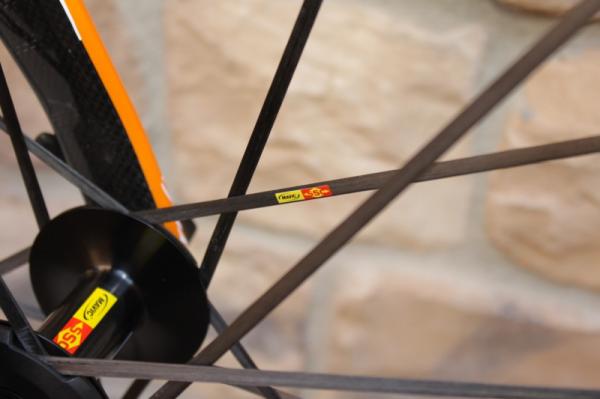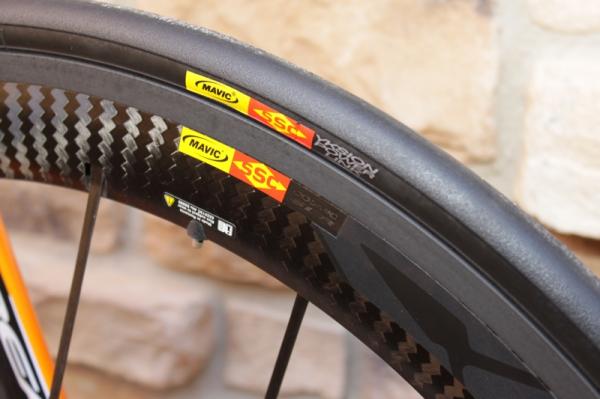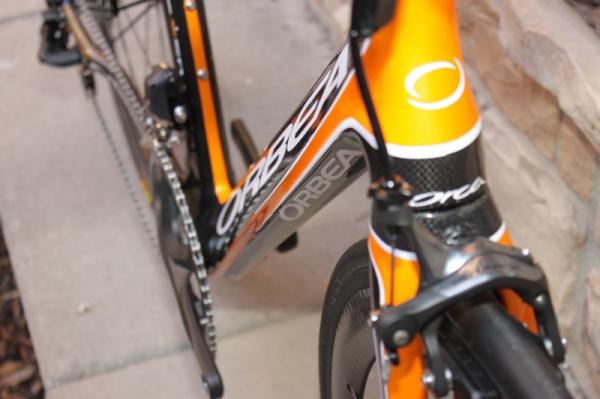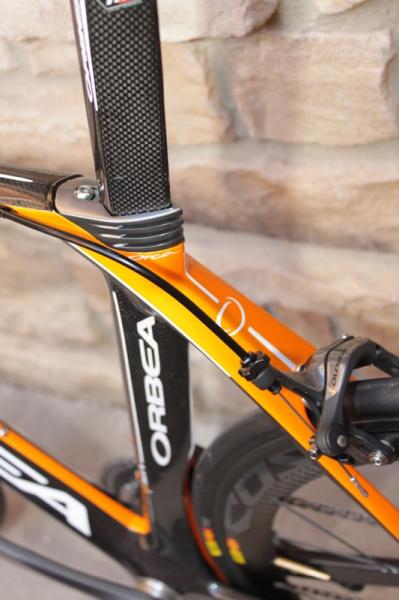First ride: 2011 Orbea Orca
Riding Orbea's stiff, smooth new looker















Orbea has unveiled a new version of its flagship Orca ProTour road racing bike at the 2010 press camp in Park City, Utah.
The company has already launched its 2011 Rallon trail bike and a new version of the Alma 29er came at last month's Mellow Johnny’s Classic Pro XCT race. Orbea is busting at the seams with new, high level, models for 2011 and the Orca is a bike with refined characteristics.
In a brief ride on the first new Orca to make it to the US, we found the bike to be stiff and smooth - though not uncharacteristically or exceptionally so on either count - and an absolute looker. Though that’s all we’ll offer until we have a chance to put more than 45 minutes on a test rig.
“The Orca is a trendsetting, high design carbon race bike,” said Tony Karklins, Orbea USA’s managing director. “It’s high performance, but incorporates much more design than our competitors. It’s something that we feel sets trends.”
Orbea considerably stiffened its 2010 flagship model by adding both a BB30 bottom bracket system and a 1-1/8in to 1.5in tapered head tube and fork steerer system without making any sort of aesthetic design changes.
“We think we hit the pinnacle of stiffness in 2010 when we went to the BB30 system,” said Karklins. “We hit the stiffness level that we feel is maximum in a bicycle. From this point we introduce the Attraction system, which retains the stiffness, but smoothes the ride.”
The Attraction design can be described as a vibration damping system. It’s made up of a twist in the plane of the carbon in the Orca’s seatstays and fork blades, which is said to interrupt the transmission of vibration from the dropout to the rider. Orbea claims this will optimise traction in all terrain, which ultimately results in better acceleration, power transfer and bike control.
The latest race content, interviews, features, reviews and expert buying guides, direct to your inbox!
“We’ve found that this twist disturbs the vibration,” said Karklins. “The shaping is much more extreme in the rear end because it can be; in the front the twist and the shaping of this is a little bit smaller.”
In addition to the new vibration damping system, Orbea adds more sizes - 53cm and 55cm in the men’s version and 47cm and 51cm in the women’s model. As part of Orbea’s Size Specific Nerve each size has a carbon layup that’s developed to meet the same performance criteria for the model for that specific size. Orbea says that it engineers 10 different bikes, not one bike in 10 sizes.
The Orca adopts DCR cable routing, which is a low friction system borrowed from the Alma mountain bikes that relies on GORE’s Ride On sealed cable systems. The DCR equipped Orca will not internally route Shimano’s Dura-Ace Di2 electric cables, however, Orbea will offer an electric-only compatible frame with internal routing for the groups wiring harness.
Orbea knocked a claimed 64g of drag off the frameset making it a claimed 14 percent more aerodynamic than the previous model. The main focus of Orbea’s aerodynamic massage of the Orca centered on making the fork blades, seat and chainstays as narrow and fit as tight as possible to the wheels. Orbea also employed its aerodynamic ‘droplet’ shape - a design concept that comes from nature’s most aerodynamic element, it claims - to the head tube and seat post of the Orca.

The new Orca features an aero shaped seat post and seat tube, along with a new seat clamp.
The new Orca’s seatpost also features a new clamp option that accepts Selle Italia’s MonoLink seat clamping system. The system, which is proprietary to Selle Italia and requires the use of a special MonoLink saddle, is said to offer 30 percent more fore/aft adjustment. The 25mm offset post will also come with a clamp that accepts a standard, railed saddle.
“Aerodynamics have become a much more important attribute in the ProTour peloton,” said Karklins. “We took what we’ve learned in the wind tunnel in designing our Ordu bikes over the last five years and decided to adapt as much of that aerodynamic knowledge as we could without adding weight.”
Two models of the Orca will be available following suit with the naming hierarchy of the brand’s Gold and Silver Alma mountain bike models. The Orca Gold employs Orbea’s highest quality carbon fibre blend, which has the most high modulus fibre in it - 70 percent of the frame is made up of M40J fibres - in turn producing the lowest weight and highest stiffness found in Orbea’s road line. A 53cm Orca has a claimed weight of 900g and costs US$3500.
The Orca Silver replaces the Opal. It uses the same aerodynamic features, Attraction damping design, cable routing and size run, but is built with a lower modulus blend of carbon fibre, which in turn produces a slightly more compliant frame with a claimed weight of 1050g, also in a size 53cm. The Orca Silver will cost $2500.
2011 models, doubled
The new models are a function of three processes that started as far back as 2007 when Orbea began adding to its engineering team, ultimately tripling the engineering staff four to nine, over the three-year period. Other factors include a conservative forecast for the tumultuous 2009/2010 global economy and a maturation of the brand's models.
“This happened three year’s back, but it’s just now we’re finally seeing all these new products,” said Karklins.
The brand was also cautious in 2009 when forecasting for 2010, due to the state of the global economy.
“For us, 2009 wasn’t the environment to launch new product,” he said. “Dealers world wide were being super cautious. We felt it was to risky to launch high end product in such an uncertain time; that’s why you see double the amount of product here [in 2010].”